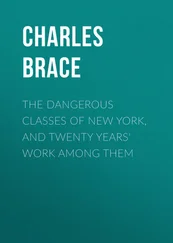Mattias Berg - The Carrier
Здесь есть возможность читать онлайн «Mattias Berg - The Carrier» весь текст электронной книги совершенно бесплатно (целиком полную версию без сокращений). В некоторых случаях можно слушать аудио, скачать через торрент в формате fb2 и присутствует краткое содержание. Город: London, Год выпуска: 2019, ISBN: 2019, Издательство: MacLehose Press, Жанр: Триллер, на английском языке. Описание произведения, (предисловие) а так же отзывы посетителей доступны на портале библиотеки ЛибКат.
- Название:The Carrier
- Автор:
- Издательство:MacLehose Press
- Жанр:
- Год:2019
- Город:London
- ISBN:978-0-85705-788-4
- Рейтинг книги:4 / 5. Голосов: 1
-
Избранное:Добавить в избранное
- Отзывы:
-
Ваша оценка:
- 80
- 1
- 2
- 3
- 4
- 5
The Carrier: краткое содержание, описание и аннотация
Предлагаем к чтению аннотацию, описание, краткое содержание или предисловие (зависит от того, что написал сам автор книги «The Carrier»). Если вы не нашли необходимую информацию о книге — напишите в комментариях, мы постараемся отыскать её.
The Carrier — читать онлайн бесплатно полную книгу (весь текст) целиком
Ниже представлен текст книги, разбитый по страницам. Система сохранения места последней прочитанной страницы, позволяет с удобством читать онлайн бесплатно книгу «The Carrier», без необходимости каждый раз заново искать на чём Вы остановились. Поставьте закладку, и сможете в любой момент перейти на страницу, на которой закончили чтение.
Интервал:
Закладка:
“You don’t make a very convincing mummy.”
I waited for her to continue.
“Quite a few people are better dead than alive. But you’re not one of them, Erasmus.”
In the silence that followed I saw another dwarf spider move over the back of my hand. I pinched my arm hard in an attempt to work out if this too was a hallucination—but the only result was an uneven red patch on the skin, while the little creature clambered over my wrist-watch.
“Who are you?”
It was only with difficulty that I was able to form the question, moved my lips as little as I could. The stitches cut like barbed wire into the corners of my mouth and around my eyelids. My whole face flared, as if covered with hot wax under the bandages.
“As I said, my treasure: your Alpha.”
“And before that?”
“The Carrier of the briefcase immediately before you. While I was your supervisor, working on your dissertation, before NUCLEUS was created.”
I tried to keep my mouth steady, but it seemed to have a life of its own. My voice sounded slurred and frightening—even to me.
“And before then?”
“Your lecturer. She who taught you everything.”
“And before then?”
Ingrid Bergman did not answer, brought the quiz to an end and turned to face into the rock chamber. I followed her look: the movements of the bandaged head. In addition to our two metal bunks and the moveable surgical lamps, I could make out a number of undefined bits of apparatus further away in the dark, like gigantic bugs now extinct. It seemed to be some kind of technical equipment which time had left behind. Manual microscopes, gauges with big displays, computers with mounted, open-reel tapes and light bulbs, all made of metal and covered with a thin, red-gray coating.
Turning my head, first to scan the shorter side of the rock chamber and then the longer one, I was able to get an idea of its size, despite my limited vision through the eyeholes in my bandages. I decided that it must be at least two hundred feet by two hundred, like two running tracks next to each other, with a total surface area of almost one and a half square miles. In other words, the size of a modest hangar. At most a quarter of it was illuminated by the emergency night lighting in the roof, a further quarter lay in semi-darkness—while at least half of the rock hall was plunged in darkness.
Nowhere was there a sign of the Nurse. I let my eyes search further around the visible quarter: past shelves fixed onto the rough bed-rock wall, fume cupboards with rows of flasks which looked as if they had never been touched, crystallization bowls and graduated glasses. Empty, aged climatic chambers. A man-sized X-ray spectrometer, which might have seemed miraculous in the mid-1960s. An M.S.E. centrifuge which was at least as bulky.
“Where the hell are we?”
Ingrid Bergman gave no answer to that either, still facing away from me, staring into the room.
“What do you know about the others… the Team, Edelweiss, the President himself?”
She started, turned her bandaged head with caution to me: as if I had woken her. Had to clear her throat before she could answer.
“So far as Kurt and John are concerned, I know where they are. And I would guess that all the others are in about the same place, back at the starting point. Sitting there on the other side of the Atlantic, trying to determine where we have vanished. How the bed-rock can have gobbled us up.”
“How can you be so sure: how do you know they’re not on our trail?”
“Because you can’t search for something which doesn’t exist. Which never has existed.”
“And yet here we are.”
“True, my treasure. Here we are.”
Just as I had begun to get to my feet and to go off to investigate where we might be, Ingrid Bergman broke the silence. Started to tell the story. Feeling her way at first, then picking up pace.
It was a strange scene, a filmic moment. Two mummy-like figures in metal bunks in a vast rock hall, illuminated by a weak, bluish glow seeping from the night-light of the neon tubes. Some sort of melody flowing out of the hole cut into the bandages around the mouth of one of the mummies.
And it took an hour before she was done. Afterward I had no idea if any of it was true, even so much as a single word of it.
Her real name, she said, was Ingrid Oskarsson. I had continued to stare unblinking at the white of the bandaged head until a register in the voice—“so, call me Ingrid”—drew me back. She had been a promising science student, with peculiar side interests in cultural history, hand-picked fresh out of high school to work in the top secret Swedish nuclear weapons program, managed by the mighty Swedish National Defense Research Institute, the F.O.A. At the end of the 1950s, the project was divided into an “S.” program and an “L.” program, the names characterized by the genius for security policy euphemisms which were preferred by the young social democratic government of the time. “S.” stood for “shelter”—and its primary function was to conceal what was being carried out by “L.”, as in “loading”.
The process was concealed under a similar, ponderous use of bureaucratic terminology. Aided by the expression “Extended security research”, one could at a measured pace take all the steps necessary for making a finished atom bomb, while the general public was none the wiser.
According to Ingrid, “ Freedom Of Action” was another of those coded expressions. The official meaning was that, in case of war, the country could change course and begin production of a Swedish atom bomb. But in fact a number of those weapons should have been finished by then, the work completed behind a veil of secrecy. Ingrid referred to it as dupery of the public and the politicians on a grand scale over a number of decades. Awareness of the Swedish atom bomb project was kept within a tight group of people.
“It was also during the first half of the ’60s, that we began to build this sprawling tunnel system. It just kept growing—and soon we started to refer to the whole construction as the Inner Circle. I wasn’t the person managing the project, not in practice, we had so many engineers, after all. People who loved dead ends, chutes, gizmos, hidden lighting systems, technological finesses. You know, Erasmus, boys . Like all the technicians behind the scenes of NUCLEUS.”
I looked into the holes that were her eyes: could see that her eyelids were shut. As if she could picture it all whilst telling her story.
“And even before that, the whole of central Stockholm was riddled with holes, like a mature cheese. We could fit eight thousand civilians plus the entire government into the Klara air-raid shelter alone, and the atom bomb-proof one at Katarinaberget was the world’s biggest when it was completed in 1957. Besides that, there were the years of what was referred to as “city transformation” and renovation of the center of town. The demolition of the old heart of Stockholm, the newspaper district, the destruction of cultural historical sites, the expansion of the district heating system after the war. Vast modernistic projects above and below ground—which at the same time served as a cover for all the construction which was going on deeper in the bed-rock. So we linked the existing facilities, creating nodes within our own navigation system: the new geography, in which we blasted out the most secret installations further below the district heating construction, so that nobody who was not authorized would have any business being down at that level. And spread out this underground landscape as far as we could. Wider than the city itself, in fact.”
She opened her eyes again, behind the slits. I felt her looking straight at me.
Читать дальшеИнтервал:
Закладка:
Похожие книги на «The Carrier»
Представляем Вашему вниманию похожие книги на «The Carrier» списком для выбора. Мы отобрали схожую по названию и смыслу литературу в надежде предоставить читателям больше вариантов отыскать новые, интересные, ещё непрочитанные произведения.
Обсуждение, отзывы о книге «The Carrier» и просто собственные мнения читателей. Оставьте ваши комментарии, напишите, что Вы думаете о произведении, его смысле или главных героях. Укажите что конкретно понравилось, а что нет, и почему Вы так считаете.












